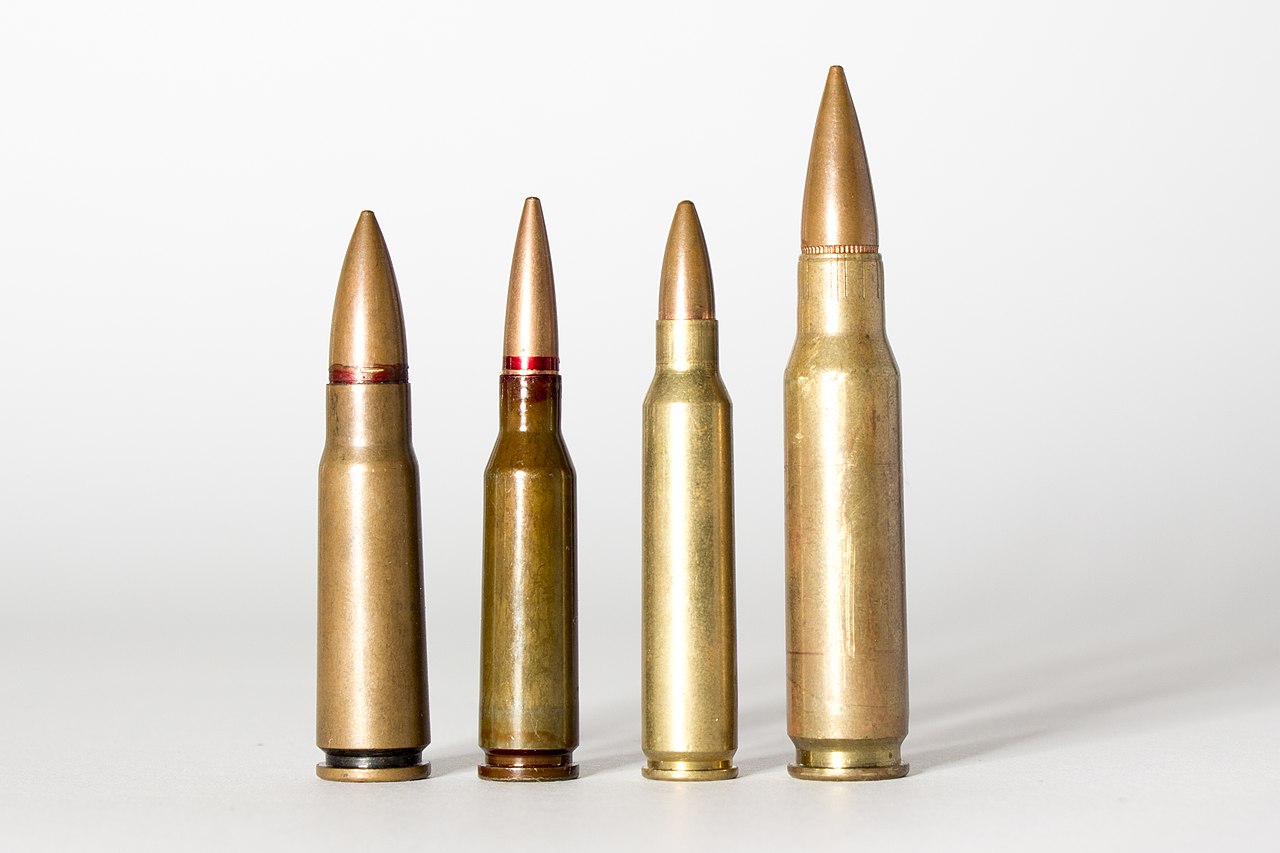Headstamp-to-Headstamp is our series aimed at helping you grok everything ammo.
It’s September of 1970. After a strongly worded letter from President Johnson and six weeks at Paris Island, a fresh recruit finds himself walking down a trail through a dense section of jungle, a newly minted Private in the Marine Corps.
In his hands is the new Colt M16 assault rifle — derided by some and loved by others in the platoon. Chief among the 5.56 NATO rifle’s dissenters is the platoon sergeant, who has been using the M14, chambered in 7.62 NATO, since the war to end all wars.
The going concern is that the smaller 5.56 round won’t perform at 500-yards or even the 300-yard mark the corps has long-held as a sacred test for long-range shooting. The M16, other hand, has been engineered to deliver effective stopping power and range for the kids of bad-breath distances all too common in the jungles of Vietnam.
In the bushes just off the trail, a young LASV guerilla stalks with his AK-47 chambered in 7.62×39, listening to this conversation amongst the U.S. troops, before deciding to ruin everyone’s day.
This anecdote, the likes of which played out for nearly a decade in the jungles of Vietnam, gets at the heart of this article; the two of the rounds that defined Cold War firearms development, the 5.56mm NATO and the 7.62×39.

By Michael Crites
Michael Crites has served as executive editor of AmericanFirearms.org since 2016 and previously held positions as associate editor and range correspondent dating back to 2000. He discovered his passion for precision shooting at age 12 during his first visit to his grandfather's shooting range, eventually earning an Expert classification in three different shooting disciplines before age 18.
During his studies at University of Wyoming, he earned four varsity letters on the collegiate rifle and pistol teams, serving as team captain for three consecutive years. He became the first UW student to complete the NRA Range Safety Officer certification while maintaining full-time student status. He graduated magna cum laude with a B.A. in Sports Communications.
His diverse career has included roles as Range Safety Coordinator for the National Rifle Championships in Camp Perry 2001; editor-in-chief, Precision Shooter Quarterly; series editor, Modern Firearms Handbook collection; managing editor, National Shooting Sports Foundation Newsletter; editor, Competitive Shooter Magazine; operations director for Western Arms & Ammunition Co.; senior editor for the Shooter's Reference Annual (Cheyenne); content director for The Firearms Report, published by the American Shooting Coalition in Billings, MT; firearms correspondent for Hunting & Shooting, produced by Outdoor Sports Media Group in Jackson, WY; and publisher for Wyoming Shooting Sports Journal in Casper. He has contributed as a regular columnist for American Rifleman (NRA Publications), technical editor for Precision, a publication of the National Bench Rest Shooters Association (Phoenix, AZ); and as firearms specialist for the Gun Owner's Annual.
As a digital content creator, he has written more than 400 articles on AmericanFirearms.org, developed shooting technique coverage for the Brownells Shooting Blog (Montezuma, IA) and Federal Premium "Range Notes" platform (Anoka, MN), and served as lead content strategist for International Defensive Pistol Association (Berryville, AR). Beyond Tactical Firearms, his current endeavors include content development for the Wyoming State Rifle Association (Cheyenne, WY) and technical manual production for High Plains Publishing of Laramie, WY.
He has contributed to the 12th, 13th, and 14th editions of Modern Sporting Rifles Guide and edited The Complete Guide to Tactical Shooting and Competitive Shooter's Reference Manual (Gun Digest Books).
View all of Michael Crites's posts.
